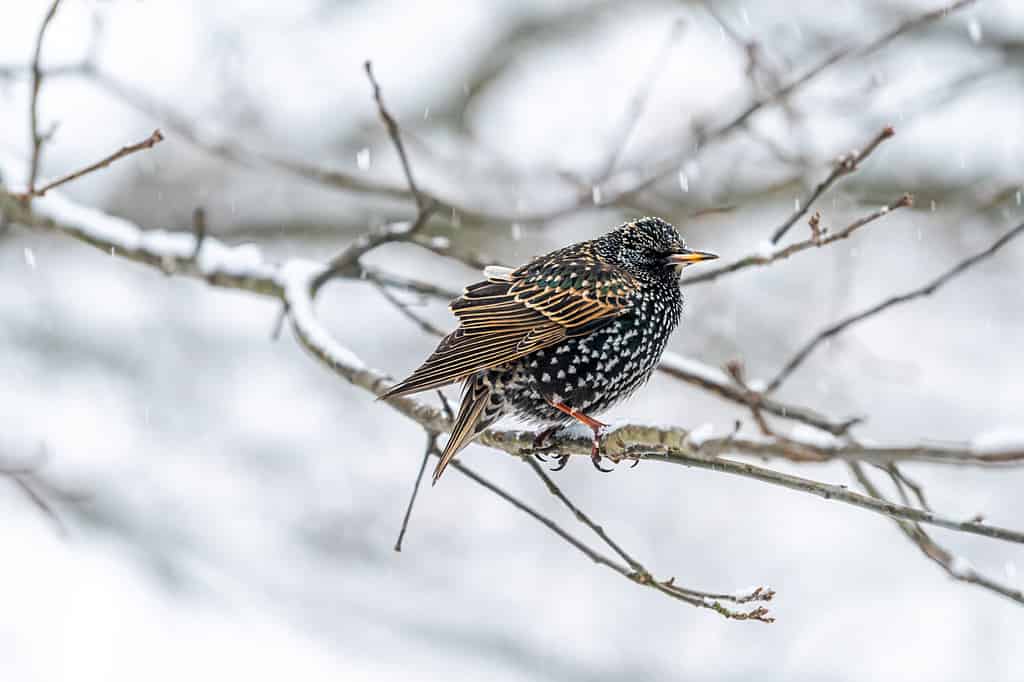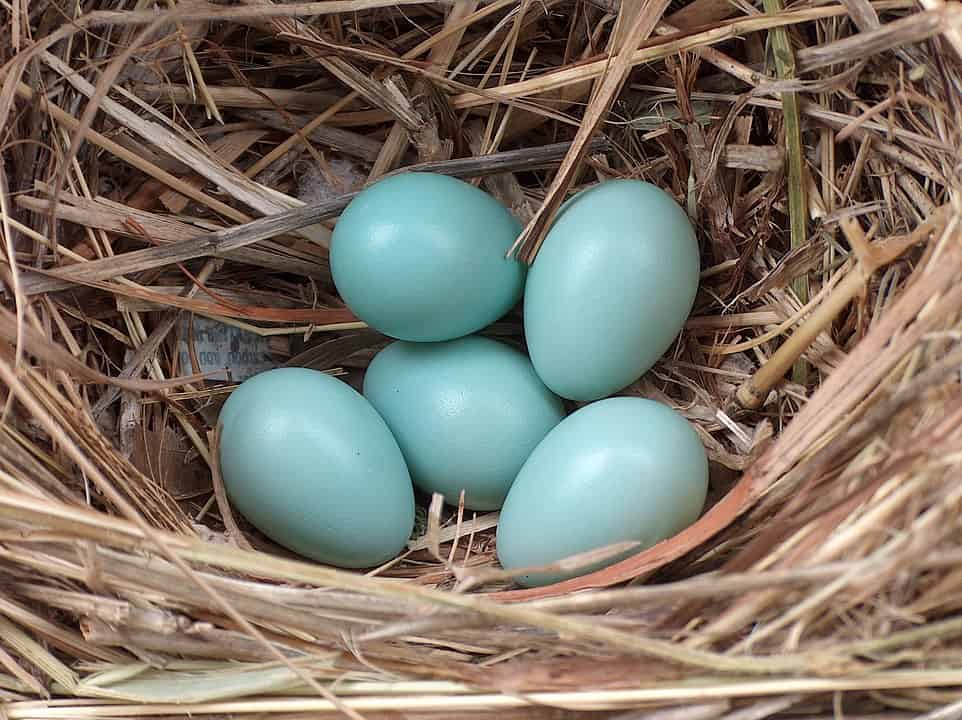Starlings are small- to medium-sized birds known for their colorfully-speckled plumage. However, with nearly 120 species in the starling family Sturnidae, there can be some variation in both appearance and behavior. In the article below, learn more about starlings, including more about the question of where starlings nest and how this varies between species.
Species Profile: Starling
As mentioned above, the term “starling” does not refer to a single species. Instead, this term applies to several dozens of species in the songbird family Sturnidae. These birds can be found throughout the world, although they are only native to regions in the Eastern Hemisphere.
Starlings are highly social birds, often seen flocking together in large groups known as murmurations. Their flocks can include a variety of different starling species—or birds from other families altogether.
They have the ability to mimic, often copying the sounds of other bird species.

European starlings can be identified by their speckled bodies and iridescent sheen.
©Kristi Blokhin/Shutterstock.com
Starling Nests
With so many different species, variation is inevitable in the nesting behaviors of starlings. However, overall, many of these species follow similar patterns, including where and how they build their nest. Below, learn about the nesting behaviors of the most common starling, the European starling (Sturnus vulgaris), with additional information on specific variations when applicable.

Starlings will often build their nests in tree cavities.
©Petr Simon/Shutterstock.com
Location
Starlings are not intimidated by living close to humans. While some species, such as the African pied starling (Lamprotornis bicolor), may nest further away from humans, with some even nesting in shipwrecks, many starlings are satisfied with building their nests in tree cavities or buildings. They will choose areas with open, grassy patches that allow them to forage, paired with short stretches of forests. Often, rural and even suburban areas fit this description.
The nest itself is built off of the ground. Usually, the nest sits at a height of around 10 to 25 feet. However, some individuals may build their nest as much as 65 feet off the ground.
The African pied starling will usually nest in tunnels in riverbanks. However, along with their record shipwreck nesting, these birds will also nest in buildings, hay bales, or tree cavities.
The Building Process
Unlike many other species where nest building is a cooperative process or done by the female alone, it is the male starling that constructs the nest. This is a part of the courtship process, in which the nest is prepared prior to finding a mate. However, after the pair is formed, the female will help with the final touches to the nest.
To begin the nest, the male locates a spot to his preference. Regardless of whether this cavity is in a tree or man-made, he will begin to fill it with soft, insulating materials. This includes grass and pine needles, followed by feathers and human materials like trash, cloth, or string.
Once the initial nest is built within the cavity, the male will build a cup at the back of the nest. This depression will be lined with feathers, grass, thin and soft bark, and similar materials.
When the female joins the building process, she may choose to discard some of the material that the male previously added. After laying eggs and while incubating, the pair will continue to add to the nest. This typically consists of fresh plant matter.
While it may seem like a detailed process, the building of the nest only lasts between 1 to 3 days. Both the male and the female will sit on the nest to incubate the eggs.
For the African pied starling, the process is similar. However, one added note about this species is that their nest is often double-brooded. This means that the nest is used to house two separate broods of offspring. European starlings may also engage in this behavior, though less often.
What to Do If You See a Starling Nest
Because starlings may nest in man-made nest boxes or human buildings, there is a possibility of seeing one. While it can be an exciting time, it’s important to take the needed steps to protect the mated pair and their offspring. This means not disturbing the nest.
However, this isn’t to say that you can’t watch the development of the nest and young from a safe distance. Seeing how starlings build their nest and raise their offspring can be an interesting and educational experience.
The typical clutch of a European starling includes three to six eggs. Their eggs have a blue or green tint, though they are mostly white. The incubation period takes around 12 days. After this point, the offspring will emerge, helpless with their eyes closed. The nesting period lasts from between 21 to 23 days.

Finding a starling nest can be exciting, but it’s important to exercise caution.
The photo featured at the top of this post is © arjma/Shutterstock.com
Thank you for reading! Have some feedback for us? Contact the AZ Animals editorial team.







